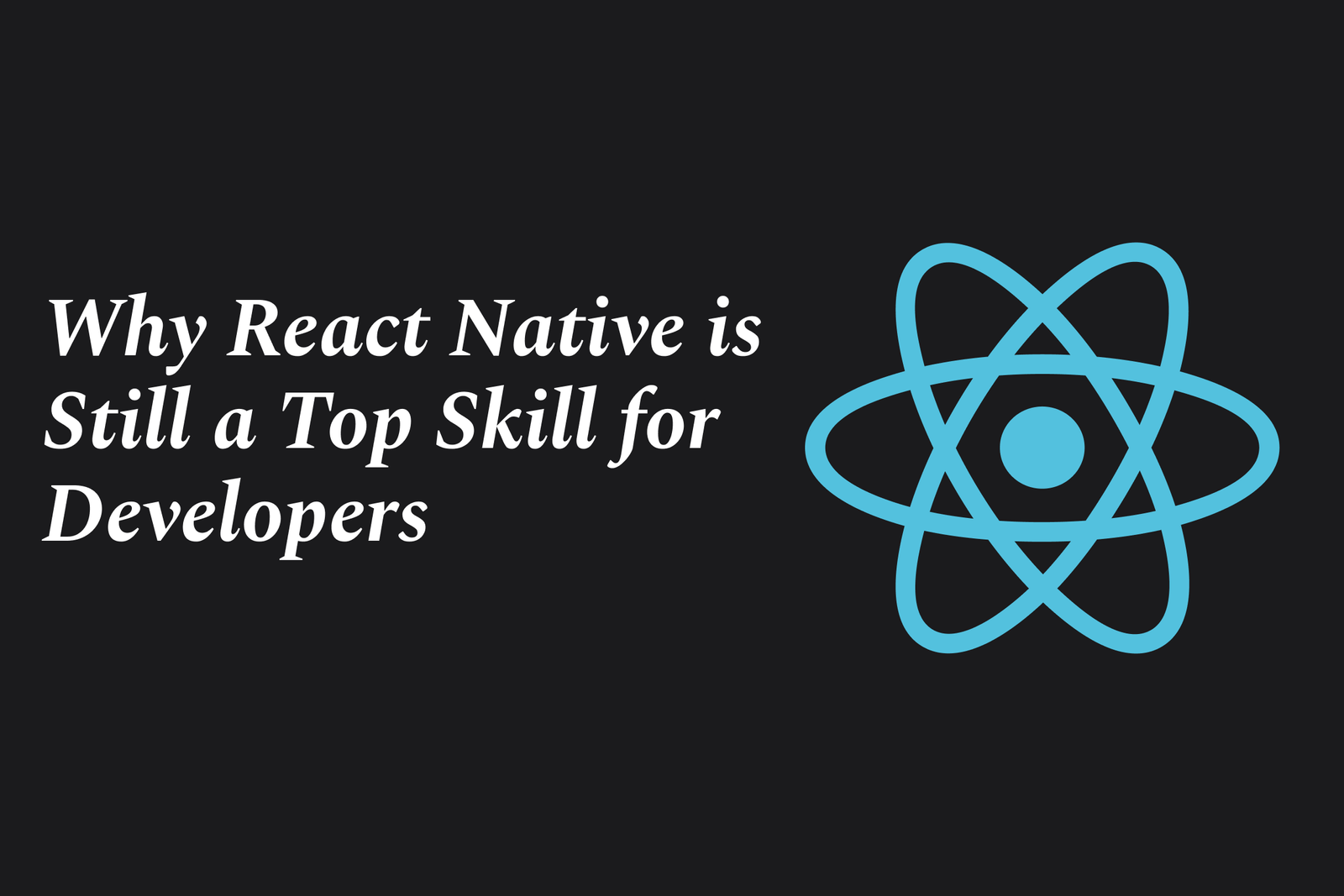Why React Native Is Still a Top Skill for Developers
React Native remains a top skill because it enables developers to build cross-platform mobile apps using a single codebase, combining the efficiency of JavaScript with native performance and UI, meeting user expectations while speeding up development and reducing costs.
Why React Native is Still a Top Skill for Developers
1 ) Bridging Web and Native Development
Many developers with web experience transition to React Native expecting to apply familiar patterns.
However, native mobile app development requires embracing platform specific components and UX standards rather than replicating web paradigms.
2 ) Importance of Native UI Primitives
Unlike the web, where UI components must be built from scratch, native platforms provide polished, cohesive design systems (e.g., iOS Human Interface Guidelines).
Utilizing native headers, navigation patterns, and controls leads to apps that feel familiar and high quality to users.
Custom building low level UI components to mimic native elements often results in subpar user experience.
3 ) Evolution of React Native Ecosystem
Early React Native implementations often used JavaScript driven UI components that only visually resembled native elements but lacked native “feel.”
Difficulties in integrating native code discouraged developers from using native modules, making JS first solutions dominant initially.
Recent improvements: better native module integration using Swift and Kotlin, easier configuration, and Expo support have enabled more authentic native experiences.
4 ) User Expectations and Platform Consistency
Users expect standard behaviors such as iOS back button functionality or native animations.
Apps that stick closely to native design conventions tend to be better received and feel more professional.
Examples like Apollo app preference over the Reddit official app demonstrate the value of native look and feel.
5 ) React Native as a Strategic Skill
Demand remains strong for developers who can build performant apps across platforms using a single codebase.
Mastery requires understanding both React Native framework and underlying native platforms to deliver seamless UX.
The evolving ecosystem and tooling make React Native a valuable and modern skill for mobile developers poised to grow beyond basic app development.
Summary: React Native continues to be a top skill because it enables cross platform app development while progressively allowing better use of native UI components and experiences. Developers who move beyond a web mindset to embrace native design principles and leverage evolving native integration tools will find React Native a powerful and in demand expertise.
https://justacademy.in/news-detail/real-time-database-plugins-in-flutter
https://justacademy.in/news-detail/android-cloud-backup-features
https://justacademy.in/news-detail/flutter-beta-features-worth-exploring
https://justacademy.in/news-detail/android-apps-integrating-blockchain
https://justacademy.in/news-detail/android-launch-event-announcements
Related Posts
In 2025, top Angular libraries offer modern, feature-rich components and tools for building dynamic web apps. From powerful data grids to low-code platforms like UI Bakery, these libraries enhance development speed, UI design, and scalability, making them essential for Angular developers.
Migrating from AngularJS to Angular 17 involves gradually upgrading your app by running both frameworks together using tools like ngUpgrade, rewriting components in TypeScript, and adopting Angular’s modern architecture to enhance performance, maintainability, and long-term support.
Angular state management tools help organize and handle app data efficiently, improving scalability and maintainability. Popular options include NgRx for robust, RxJS-based patterns, and newer Signal Store solutions that offer simpler, reactive approaches integrated tightly with Angular’s latest features.
RxJS in Angular empowers developers to manage asynchronous data streams with powerful operators like `forkJoin`, `combineLatest`, and `zip`. Mastering these key operators in 2025 is essential for building efficient, reactive applications that handle complex event sequences seamlessly.
Angular performance optimization in 2025 focuses on improving app speed and responsiveness by using techniques like OnPush change detection, lazy loading, efficient data caching, and AOT compilation. These practices reduce load times, enhance user experience, and ensure scalable, fast Angular applications.
In 2025, Angular remains preferred for large-scale, enterprise apps with its robust, all-in-one framework, while Vue attracts developers seeking simplicity and fast development for smaller projects. Both frameworks excel, with choice driven by project needs and team expertise.
Angular Signals are a new reactive primitive in Angular 16 that enable fine-grained, efficient change detection by automatically tracking dependencies and updating only affected parts of the UI. They simplify state management and boost app performance, revolutionizing Angular's reactivity model.
Angular interview questions to prepare in 2025 focus on core concepts like components, directives, data binding, routing, and dependency injection, along with TypeScript mastery and latest Angular features to ensure strong practical knowledge for building scalable, efficient web applications.
AngularJS reached its official end of support in January 2022, meaning no further updates or security patches. To ensure app security and performance, developers should consider migrating to modern Angular versions or seek third-party long-term support options if immediate migration isn’t possible.
The Angular Roadmap 2025 highlights upcoming features focused on improving developer experience and performance, including zoneless Angular, Signals integration, enhanced Forms, async data handling, improved HMR, and expanded Angular Material/CDK enhancements, driving modern, efficient web app development.










